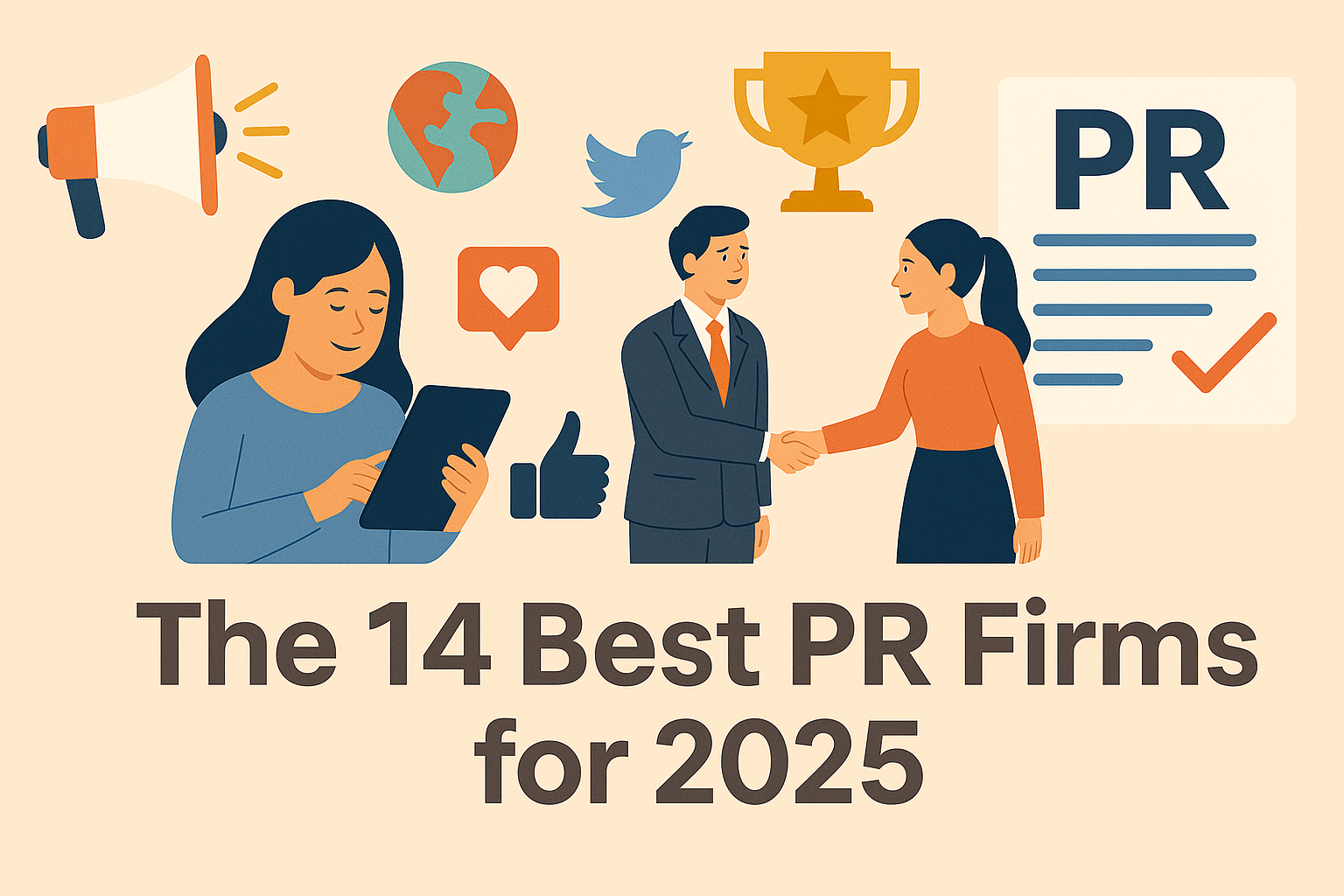Before there was digital PR there was…well, PR. Publicists worked with print publications, TV stations, and radio stations to gain coverage for their clients and expand their clients’ brand reach. They hosted events and press conferences and networked with contacts in the media – a lot. In an offline world, there weren’t many other ways to get your client in front of the public’s eye.
As the digital sphere has taken over, this kind of PR has come to be called traditional PR, in order to differentiate it from the more recently evolved digital PR. Traditional PR still exists, of course, and it still serves a critical purpose.
However, in today’s 24-hour media environment, the necessity of digital PR cannot be overstated. So how do you incorporate this practice into your larger marketing strategy?
"Digital PR might seem like an add-on—something businesses should tackle when they have extra money or time—but in actuality, it should be a non-negotiable."https://t.co/KLy14JrBNv
— Shama Hyder (@Shama) March 18, 2021
What is digital PR?
First, let’s establish one important fact. Traditional and digital PR both have the same goal: to increase visibility and boost the reputation of their clients, presenting them in a positive light.
Digital PR involves doing this through online outlets, whether that’s the online incarnation of a print magazine or a popular industry blog. Since digital media includes so many different types of outlets, as opposed to traditional media, digital PR efforts are generally a lot more varied and personalized than those of traditional PR.
What do digital PR efforts involve?

Digital PR efforts involve as much – possibly even more – networking as in traditional PR. The difference is that much of that networking is done online, whether directly by email, or by following, commenting, and reaching out to journalists and influencers via their social media profiles.
While the typical method of communication for traditional PR is a press release, digital PR communications can be a lot less formal. Press releases, by their nature, are impersonal and formulaic: pertinent information is distilled into three or four paragraphs and disseminated widely among journalists and media outlets.
The problem with press releases is that often, a press release goes out into the ether without providing that much data on who saw it or what they thought of it.
If effective, a press release can sometimes serve as a conversation starter, prompting a journalist to initiate a discussion with the publicist. That can then lead to richer coverage of the brand the publicist is pitching, and further coverage down the line.
So press releases certainly serve a purpose. However, while they’re suitable for the traditional print media industry, they’re not as effective in the online media space.
A digital PR communication, on the other hand, could be as simple as a casual email with an informal pitch. Take this example of a publicist pitching a story on a hypothetical fashion designer to a journalist. Because the publicist has, naturally, done her research (a must whether you’re doing digital or traditional PR!), she knows this journalist covers fashion and style stories.
Hi, journalist name,
I’m a publicist working with X fashion design client, and I thought you might be interested in their story. These designers are a Cuban-American mother-daughter team who have just released their first swimwear line, inspired by the bathing suits the mother saw on the beaches of Cuba while growing up in the 1960s.
I’d love to chat with you about this unique design team. Please get in touch if you’d like to talk.
Best,
publicist
It’s short – shorter than a press release, you’ll notice – and to the point, and it focuses more on the story behind the product than the product itself (which is good practice for any type of PR efforts these days).
Whom do digital PR outreach efforts target?
Digital PR and traditional PR outreach differ in another way, as well.
Digital PR recognizes that consumers today are much more likely to trust the opinion or recommendation of a friend or online influencer than they are a promotional piece from the brand itself. Therefore, in addition to contacting professional journalists, which traditional PR executives would focus on, digital PR pros would also reach out to influencers.
Influencers are simply people who’ve achieved a significant degree of influence over a certain niche or industry. That could be a celebrity with a particularly robust Instagram following, like Taylor Swift, or it could be a mommy blogger with more than 5 million followers, like Joanna Goddard of A Cup of Jo.
Now, in this sense, digital PR and influencer marketing share some similarities, but the two practices are actually different.
To put it briefly, digital PR is more concerned with earning coverage from prominent outlets, with a stronger focus on online magazines, journals, and other professional outlets – although, influential bloggers and social media personalities are fair game, too.
Influencer marketing involves more partnerships between a brand and influencers – things like product giveaways, product placement, etc.
If you need more and want to read an in-depth description of how influencer marketing works, take a look at our post “Influencer Marketing from A to Z: A Complete Guide for Businesses.”
How does social media play into digital PR?
Social media is a vital element of digital PR, as it allows brands to create engagement with their target audiences.
The first step, of course, is cultivating robust social media profiles on Twitter, Instagram, Pinterest, Facebook, and any other social site that makes sense for your brand. Once these profiles are up and running, you can start running individual PR campaigns through your profiles.
These have the potential to greatly impact your online visibility, as effective campaigns will be widely shared – and when someone with 100,000 followers shares your post, that’s already 100,000 more eyes that could be on your content.
One example of a wildly successful digital PR campaign is the ALS Ice Bucket Challenge, which started in 2014 and took social media by storm. (In fact, the ALS Association reported that the donations from the challenge funded the discovery of a new gene that contributes to the development of ALS.)
Everyone from your next-door neighbor to pro athletes and celebrities started doing the Ice Bucket Challenge, resulting in not only massive fundraising, but also a huge increase in awareness of the disease.
To make sure you’re getting the most out of your social media efforts, ensure that you’re making optimal use of hashtags and engage with followers who comment, retweet, like, or otherwise reply to your posts.
What else should I know about digital PR?
The other component of digital PR – one that doesn’t have a counterpart in traditional PR – has to do with the technical side of improving a brand’s online visibility.
While this involves creating and distributing great content, as well as spurring earned media, a digital PR campaign must involve search engine optimization (SEO) if it’s to be truly effective.
Related Post: 50 B2B SEO Strategies
That means doing keyword research, for example, to find out what people are searching for in your industry. It means optimizing your content to include those keywords so that Google ranks it higher. It means creating targeted content that uses those highly-searched keywords to appeal to a certain specific audience.

In addition, digital PR professionals make heavy use of available analytics, like Google Analytics, to see what’s working and what’s not, and make the appropriate changes.
This is one major advantage that digital PR has over traditional: with a print magazine article, you can never know for sure how many people are reading it. With an online article, you can see how many views it got, how long people stayed on the page, where they were located…the list goes on. It’s amazing, really, how much insight you can gain into your audience with some simple analytics tools.
So why invest in traditional PR if I can go fully digital?
Even though digital PR is becoming more and more important for brands as time goes on, traditional PR still has a strong role to play in marketing.
The question of how much time and money you should devote to traditional versus digital PR really lies with you and your brand. What are you selling, and whom are you selling to? Luxury brands, for example, are and probably will always be heavily invested in traditional PR, as well as digital. This is because much of their publicity comes from events, experiences, and partnerships with celebrities and aspirational figures.
Other brands, particularly B2B brands, may find that digital PR provides a higher ROI for them than traditional.
Of course, digital and traditional PR are not mutually exclusive – nor should they be. Efforts in both spheres can be organized so that they work together to fulfill goals in both the online and offline worlds.
It’s this hybrid of traditional and digital PR that can really take your brand far – in fact, you can read an extensive example of how this can work in our CEO Shama Hyder’s book Momentum.





